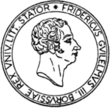Prototype of the four-species calculating machine with a switching latch mechanism by Curt Dietzschold from the year 1876
In Glashütte in 1876, mechanical engineer Curt Dietzschold (1852-1922) started developing a calculating machine whose components were meant to be significantly simpler than those of the already successful Arithmomètre by Charles Xavier Thomas. For that purpose, he chose a mechanism for input and transfer that has a tooth engaging with a standard gearwheel and turning it according to the digits that have been set in. This switching mechanism was later named “switching latch mechanism” and was successfully used in the Hamann machines (see: Hamann Manus). From 1877 on, Dietzschold let Lange und Söhne manufacture three specimens whose whereabouts we partly know about:
One specimen (numbered 3) is in the Mathematisch-Physikalischer Salon Dresden, a second one (numbered 2) got into the Arithmeum in 2006 as a part of the Waldbauer collection; the third specimen (probably no. 1) might have gone to the Preußisches Statistisches Amt in Berlin in 1878.
In 1878, Dietzschold persuaded his fellow student Arthur Burkhardt to participate in the production of his calculating machine. However, after Dietzschold was appointed as director to the School of Watchmaking in Karlstein (Lower Austria) in 1879, Burkhardt changed further development to the well-known stepped drum principle by Thomas – a decision that Dietzschold was deeply offended by. No other machines with Dietzschold’s switching latch mechanism were built. The machine is extremely valuable proof of the beginning of the production of calculating machines in Germany. The 3D animated video that Jonas Weinz, student of Computer Science, made as a part of the lecture about the History of Mechanical Calculation by Professor Dr. Ina Prinz shows the genius of Curt Dietzschold’s switching latch mechanism in a particularly detailed and easily understandable way.






